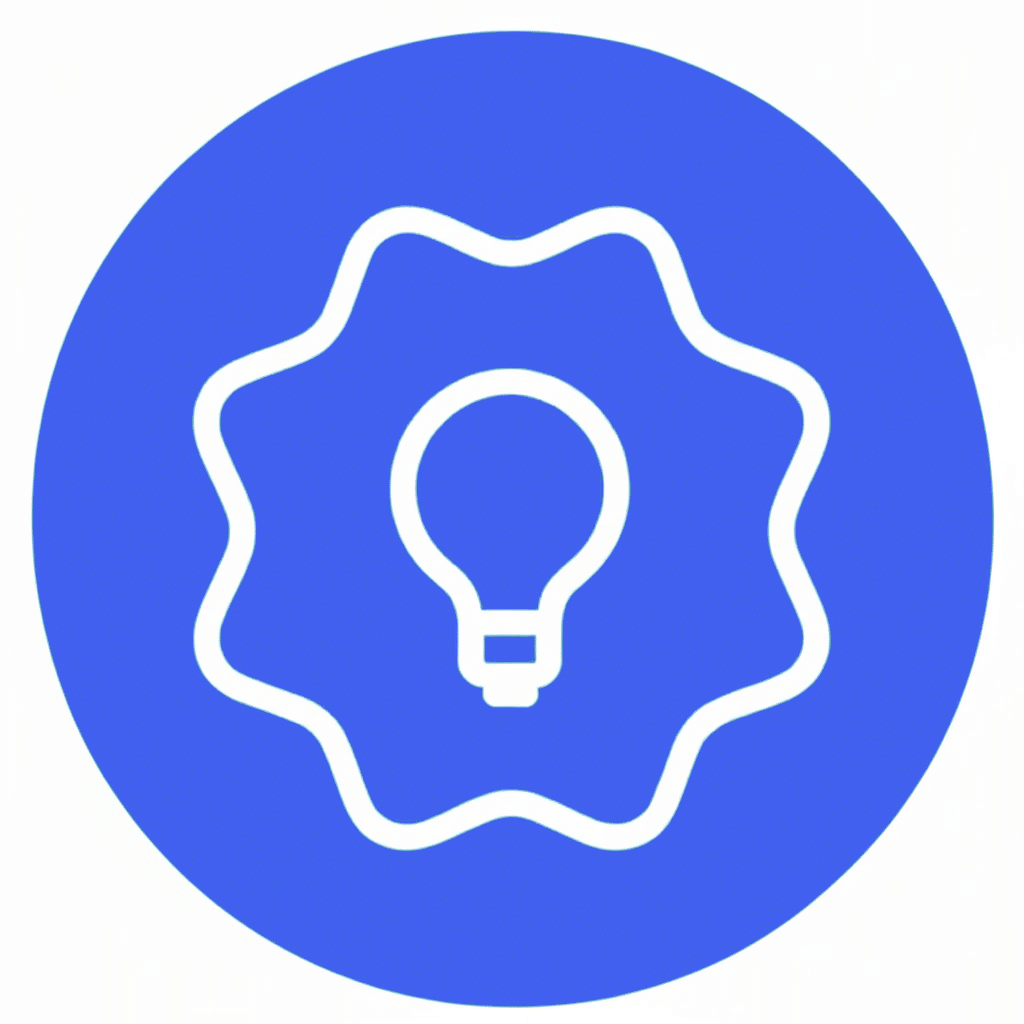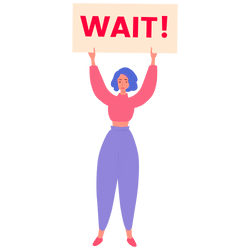
Summary
Most contact centers sell in some capacity – handling renewals, offering upsells, or processing orders. But without structured sales enablement, results stay inconsistent and growth stagnates.
With the right mix of right sales enablement strategies, tools, and training, you can sell smarter without compromising service quality.
In this guide, you’ll learn:
– The difference between sales strategies and tools for better planning and resource allocation
– Why even sales-active contact centers need structured enablement to standartize approaches, utilize contextual clues, and adapt faster to customer behaviour changes
– 10 actionable strategies for smarter selling that to optimize your contact center’s operations
– Best practices to keep your sales enablement scalable, data-driven, and successful
Your contact center handles thousands of customer interactions every month. But the truth is, you’re probably missing out on significant revenue opportunities.
Most contact centers already do some selling, taking orders, processing renewals, and doing occasional upselling. But there’s a massive gap between operations that generate modest additional revenue and those that become true profit centers. The difference isn’t luck or better products, but rather strategic sales enablement.
This post will help you create sales strategies that work for your business goals, engaging buyers effectively at every stage of the customer journey without turning your agents into pushy salespeople or compromising service quality.
What is Sales Enablement
Sales enablement ensures that sales teams and customer-facing agents have the right resources, knowledge, and support to engage buyers effectively and drive predictable revenue growth.
In the context of contact centers, this usually means providing sales reps with :
- Tools and insights to personalize conversations
- Training and coaching to convert more effectively
- Processes and playbooks to deliver a seamless and consistent buying experience across channels
Difference between Sales Strategies and Tools
Understanding the distinction between sales enablement strategies and tools is important for both planning and building successful revenue-generating operations.
Strategies are high-level plans to increase sales efficiency and deliver a better customer experience. They often involve coordinating people, processes, and technologies.
A strategy :
- Focuses on business outcomes (e.g., increasing conversion rates, shortening sales cycles, reducing churn)
- Details how the organization will approach sales opportunities
- Is designed for long-term growth
- Adapts to various systems and tactics
Tools, on the other hand, are the software, platforms, and physical resources used to execute strategies. Examples include contact center software, CRM systems (like Salesforce, Zoho, Pipedrive), sales enablement platforms, AI conversation analytics, and predictive dialers.
A tool :
- Addresses specific operational needs or challenges
- Provides concrete methods for executing sales tactics
- Delivers measurable capabilities or improvements
- Can be replaced with alternatives to achieve the same goal
In 2025, you can’t realize a sales enablement strategy effectively without the right tools. However, simply piling software on without a clear plan for how to utilize it to achieve specific business goals will waste your investment and yield minimal results.
Your strategy should guide the selection, implementation, and utilization of the tools, which, in turn, would make the execution of the strategy possible, efficient, and scalable.
Why Sales-Active Contact Centers Still Need Sales Enablement Strategies
Most contact centers handle sales opportunities as they arise, taking inbound orders, processing renewals, or upselling only when customers request these options. Even operations already focused on driving revenue need ways to optimize and sustain their sales performance, rather than relying heavily on individual agent skills, legacy scripts, and productivity metrics.
Without structured enablement, you often see :
- Variable performance that stagnates growth
- Inconsistent messaging across agents and teams
- Basic and generic product pitches
- No systematic analysis of what works vs. what doesn’t
- Higher staff attrition rates
Sales enablement provides the tools, content, training, and feedback loops to help you :
- Standardize approaches and scale independently of individual performance
- Target the right customers at the right time with the right message
- Handle objections with more nuance and confidence
- Use contextual clues to pivot the pitch mid-call
- Adapt faster to changes in customer buying behaviors and expectations
10 Proven Sales Enablement Strategies
Sales strategies help contact centers systematically identify and convert opportunities rather than waiting for them to appear naturally. Research shows that organizations with a sales enablement strategy achieve a 49% more win rate on forecasted deals.
Here are ten examples that can skyrocket your operations :
1. Build an Integrated Sales Tech Ecosystem
The Goal : To eliminate technology silos by connecting all sales-related systems into a unified platform that automatically shares data and triggers actions.
Key Components : CRM (Customer Relationship Management) systems, cloud telephony, knowledge management systems, helpdesk tools, data sync connectors, sales intelligence tools
How to Execute It :
- Audit your current stack and identify redundancies, gaps, and areas of poor integration.
- Define integration requirements for each workflow by going over the data and tools the agent needs at each step.
- Choose a core platform as the single source of truth for customer data, with other systems flowing into or out of it.
- When choosing new tools, prioritize vendors that have native or API-based integrations with your existing systems.
- Start with critical integrations and expand use cases gradually, testing at each stage.
- Regularly review your integrations to ensure data accuracy and process efficiency.
Squaretalk Tip : Whether in-house or external, make sure you have the technical resources needed to build and maintain these integrations.
2. Leverage AI-Driven Tools and Automation to Enhance Human Performance
The Goal : To reduce manual tasks and improve agent decision-making, allowing them to focus on high-value relationship building.
Key Components : Predictive dialers, speech and text analytics, automated follow-ups and reminders, AI voice agents, intelligent routing, predictive analytics, IVR
How to Execute It :
- Analyze agent activities and customer interactions to spot repetitive tasks and opportunities for automation.
- Start with a specific use case (e.g., post-call logging) to prove ROI before scaling.
- Use AI-enhanced predictive dialers to dynamically adjust call volumes based on real-time agent availability.
- Utilize AI voice sales agents for initial lead qualification and appointment setting.
- Leverage self-service for common questions, freeing up agents for more complex, sales-oriented interactions.
- Have AI score leads and automatically route the ones most likely to convert to senior sales agents.
- Leverage sentiment analysis to detect customer mood.
- Train agents on how to interpret and use AI-driven recommendations.
- Record and analyze calls and chats using AI to identify sales best practices, common customer pain points, and agent skill gaps.
- Monitor automation outcomes and regularly refine workflows based on the results.
Squaretalk Tip : Ensure data cleanliness and consistent tagging, so your AI models work properly.
3. Optimize Agent Onboarding
The Goal : To reduce time-to-productivity for new reps and ensure service consistency by providing structured, ongoing training on the latest product knowledge, sales skills, and necessary resources.
Key Components : Onboarding programs, role-play, live-call simulations, core sales skills training, continuous learning paths
How to Execute It :
- Develop a 30-60-90 onboarding plan with clear learning objectives and performance milestones for the first three months.
- Combine elearning modules, in-person sessions, and supervised call shadowing/listening.
- Explain product features in the context of selling them and addressing customer needs.
- Use role-specific sales scenarios that mimic real customer calls, difficult objections, and complex inquiries.
- Teach agents how to efficiently use your knowledge management system as part of their daily workflow.
- Pair new sales reps with experienced, high performers for ongoing support and mentorship.
Squaretalk Tip : Organize recurring skill-building workshops, refresher courses, and microlearning sessions to keep your agents up-to-date with new product developments and customer trends. Our Sales Support Guide will give you the best practices and tips for creating comprehensive, data-based training.
4. Create an Omnichannel Sales Experience
The Goal : To ensure consistent, seamless conversations and meet customers where they are (phone, email, chat, WhatsApp, SMS, social media).
Key Components : Omnichannel platforms, unified agent desktops, channel-specific scripting and training, consistent messaging, cross-channel reporting and analytics
How to Execute It :
- Identify how people prefer to interact with your business at different stages of the sales process (e.g., chat for initial inquiry, phone for complex deals, email for follow-up).
- Ensure that when a customer switches channels (e.g., from chat to phone), the agent has immediate access to the full conversation history and context.
- Establish handoff protocols between channels to improve continuity, consistency, and conversion rates.
- Adapt your brand tone, style, and scripts for each channel while keeping the messaging consistent.
- Train agents on channel-specific best practices and sales techniques.
- Implement universal queues/skills-based routing to ensure the right customer reaches the right agent on the right channel.
Squaretalk Tip : Set channel-specific benchmarks and cross-channel performance tracking to create realistic goals and gain a holistic view of the customer journey.
5. Implement Smart Prospecting and Lead Prioritization Frameworks
The Goal : To identify, segment, and prioritize the most promising leads, so agents spend time on the prospects most likely to convert.
Key Components : Lead scoring models, intelligent lead distribution, Ideal Customer Profile (ICP) development, data enrichment tools, CRM integration, dialer systems
How to Execute It :
- Define dynamic scoring criteria (e.g., behavior and demographics) and clear handoff protocols.
- Set up rules to automatically assign leads to agents based on score, specialization, availability, or language.
- Develop targeted prospect lists for Ideal Customer Profiles (ICPs) and trigger events (e.g., competitor news, new funding rounds).
- Integrate tools that provide background on prospects (company size, industry, recent news) before agents make contact.
- Continuously refine the scoring criteria based on closed-won and closed-lost data.
Squaretalk Tip : Establish routing rules for high-value prospects and automated nurturing for lower-priority leads.
6. Align Sales, Marketing, and Service Departments
The Goal : To reduce friction across the buyer journey and maximize customer lifetime value by unifying customer-facing functions.
Key Components : Shared goals and KPIs, unified customer data, closed-loop feedback, consistent messaging
How to Execute It :
- Ensure all three departments have overlapping KPIs related to customer acquisition, retention, and lifetime value.
- Implement a unified CRM so all teams share customer interactions, lead status, and service history.
- Clearly articulate what an MQL and SQL are, and how prospects are handed off between marketing, sales, and (for warm leads) service departments.
- Use a shared enablement hub for playbooks, messaging, and personas.
- Have recurring meetings to discuss campaign performance, sales pipeline, customer feedback, and common service issues.
- Train service agents to identify upsell/cross-sell opportunities and smoothly transfer customers to sales.
- Create a feedback loop for marketing to update sales content based on rep input and for service agents to provide insights on product issues or common questions to the other departments.
Squaretalk Tip : Use custom shared dashboards to track your progress.
7. Deliver Personalized Engagement at Scale
The Goal : To deliver highly tailored and relevant interactions to every customer and prospect, improving conversion rates.
Key Components : Customer data utilization, dynamic scripting, personalized content, Sentiment Analysis, tailored offers and recommendations, channel-specific personalization
How to Execute It :
- Segment customers based on behavior, value, and preferences and create dynamic conversation guides for each one.
- Train agents to actively leverage CRM data (e.g., customer history, preferences, previous interactions) before engaging.
- Use AI or rule-based systems to provide real-time, personalized suggestions based on customer data and conversation context.
- Organize a sales content library so agents can quickly find and share case studies, product sheets, or testimonials relevant to the prospect’s specific needs or industry.
- Give reps the autonomy to offer personalized discounts or bundles within defined parameters based on customer value or specific triggers.
- Utilize Sentiment Analysis to detect customer mood during calls and chats, allowing agents to adapt their tone and approach.
- Provide follow-up templates that can be easily customized with specific details from the prior conversation.
Squaretalk Tip : Combine automation tools to deliver relevant content at optimal touchpoints (e.g., when an existing customer reaches 80% of their plan limits, the automation sends a usage optimization guide link via WhatsApp, followed by upgrade email proposals with ROI calculators specific to their usage patterns, and an invitation for one-on-one consultation).
8. Anchor Sales Efforts in Buyer Personas and Journey Mapping
The Goal : To improve sales tactics by deeply understanding who your customers are and how they interact with your brand.
Key Components : Buyer Persona development, Customer Journey mapping, pain point identification, internal alignment
How to Execute It :
- Analyze customer research, input from sales, marketing, and CX, and recorded conversations to identify common patterns.
- Create detailed personas that include demographics, decision roles, goals, pain points, motivations, common objections, preferred communication channels, and even relevant personality traits. Give them names and faces.
- Define the phases a customer goes through (e.g., Awareness, Consideration, Decision, Post-Purchase), pinpoint the interaction points with your contact center, and consider the customer’s likely emotions, questions, and needs at that moment.
- Ensure your sales playbooks, scripts, and content are persona-specific and address specific needs at each stage.
- Train agents on personas and journeys so they can use these insights during real interactions.
- Regularly update your personas and journeys as market conditions, products, or customer behaviors change.
Squaretalk Tip : Use call center analytics to track how effective your messaging is at different journey stages (e.g., search keywords to validate persona pain points, A/B test pitches based on customer sentiment, etc.)
9. Use Enablement Analytics and Agent Intelligence for Performance Visibility
The Goal : To use analytics to track agent performance, optimize sales effectiveness, and provide data-driven coaching.
Key Components : Performance dashboards, agent scorecards, content usage analytics, call recording analysis
How to Execute It :
- Define sales-specific Key Performance Indicators (KPIs) and track them on team and agent levels.
- Customize dashboards to show managers and agents activity metrics (e.g., calls, talk time) and outcome metrics (e.g., conversion, revenue, CSAT) in real time.
- Use AI to analyze conversations for keywords, sentiment, adherence to scripts, and objection handling.
- Regularly ask your agents for feedback on the usefulness of training, tools, and content.
- Identify top performers, analyze their techniques, and use these insights to create new training and playbooks.
- Use analytics skill gaps and training needs.
Squaretalk Tip : Conduct A/B testing on call scripts, WhatsApp templates, or coaching approaches before implementing them widely.
10. Build Continuous Feedback and Iteration
The Goal : To establish sales enablement as an ongoing, iterative process that dynamically adapts to market changes, product updates, and evolving customer needs.
Key Components : Regular content updates, ongoing agent coaching and upskilling, feedback loops, benchmarks, cross-functional collaboration
How to Execute It :
- Have a dedicated person to oversee and drive enablement initiatives.
- Schedule reviews (e.g., monthly or quarterly) of all sales content, scripts, and playbooks and update them based on product changes, competitive shifts, and sales performance.
- Ensure sales managers conduct regular one-on-one coaching sessions with sales reps to discuss call and conversation analytics data.
- Make it easy for agents to suggest new content, report outdated information, or request specific training.
- Stay up-to-date with new sales techniques, emerging technologies, and competitor offerings to keep your enablement strategies relevant.
- Implement smaller, agile changes based on continuous feedback and data before scaling.
- Encourage agents to share best practices, learn from each other, and continuously improve their skills.
Squaretalk Tip : Create a form for agents to submit feedback on scripts, objection-handling tactics, and processes.
Best Practices for Sales Enablement
Sales enablement strategies can only be effective if they’re well-executed, continuously optimized, and aligned with both your business goals and customer behavior. Following these best practices will ensure that your strategies are actionable, scalable, and results-driven :
- Maintain Customer-Centric Mentality : Don’t compromise service quality for sales outcomes. Train agents to identify customer needs and only recommend solutions that truly add value, avoiding overselling, misrepresentation, or pressure tactics. This builds trust and creates sustainable revenue growth rather than short-term gains that could damage your client relationships in the long run.
- Integrate Sales Naturally into Service Workflows : Design sales opportunities to emerge organically from customer interactions. Support agents should listen for buying signals, pain points, and expansion opportunities that naturally arise during problem-solving conversations.
- Prioritize Agent Experience : Ensure that every tool, piece of content, and training module is in one place, intuitively designed, highly accessible, and reduces cognitive load.
- Set Channel-Specific Performance Targets : Define what “success” looks like per channel (e.g., <2 min WhatsApp response time, 5-minute talk time).
- Make Data-Driven Decisions : Establish a deeply analytical approach where all enablement initiatives are measured, tracked, and lead to clear actions and strategic refinement.
- Build Flexible Technology Infrastructure : Invest in systems that can adapt to your changing business needs and integrate with new tools as you grow.
- Celebrate Enablement Wins: Recognize agents who complete learning paths, provide useful feedback, support other team members, or test new scripts, even if they’re not top sellers. This will build a culture that values personal growth as much as sales success.
Final Words
Sales enablement in 2025 is a critical growth driver for any sales-focused contact center. Whether you run an outbound operation, a blended sales and service team, or a global BPO, these strategies can help your agents sell smarter, faster, and more effectively.
It’s important to remember that sales enablement is about building systems that scale sales excellence, combine strategic frameworks with practical tools, and implement actionable training.
By following the proven strategies and best practices we shared, you’ll be well-positioned to improve sales outcomes, customer satisfaction, agent engagement, and operational agility.








